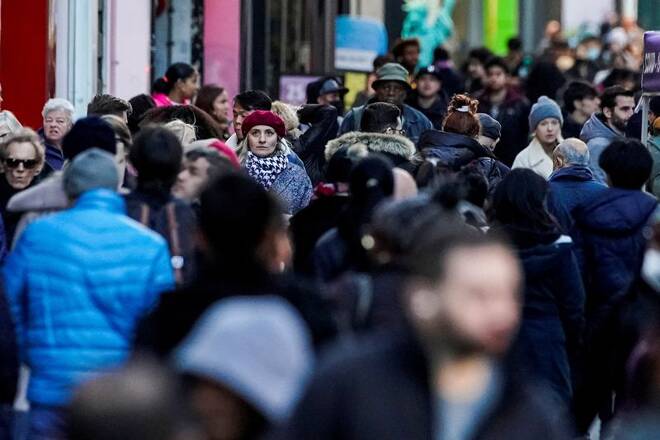Advertisement
Advertisement
U.S. labor force gap mostly due to pre-pandemic trends, study finds
By:
By Howard Schneider WASHINGTON (Reuters) - Almost all of the remaining shortfall in U.S. labor force participation is the result of demographic and other trends that predate the COVID-19 pandemic, according to new research that suggests little chance that growth in the number of workers will help ease a tight American job market.
By Howard Schneider
WASHINGTON (Reuters) – Almost all of the remaining shortfall in U.S. labor force participation is the result of demographic and other trends that predate the COVID-19 pandemic, according to new research that suggests little chance that growth in the number of workers will help ease a tight American job market.
After accounting for factors such as population aging and changes in education that influence people’s willingness to work, the study showed that U.S. labor force participation was only about 0.3 percentage points short of where it would have been without the pandemic – equivalent to around 700,000 “missing” workers.
“Much of the decline in labor force participation over the past three years should have been anticipated even absent the pandemic,” Katharine Abraham, a University of Maryland economics professor and former U.S. Bureau of Labor Statistics commissioner, and Lea Rendell, a University of Maryland doctoral candidate, wrote in a study released late on Wednesday in conjunction with a conference at the Brookings Institution think tank.
They attribute the remaining gap largely to fear of COVID or the lingering impact of “long COVID” illness, though they say their numbers, far below what some other studies have found, were “very much in the nature of guesstimates” given the difficulties of pinning down a precise motivation for why people left the workforce.
Still, the figures suggest a winnowing down of COVID-related impacts on the labor force, a significant conclusion for U.S. policymakers hoping labor force participation rates could rebound to pre-pandemic levels.
As of February, about 62.5% of U.S. adults were either working or looking for work, 0.8 percentage points below where it was in February of 2020, according to government figures.
It has been in a steady decline for nearly a quarter century after peaking at 67.3% in April 2000. After a dramatic drop of more than 3 percentage points at the start of the pandemic, Federal Reserve policymakers have hoped the participation rate would both recover to its early 2020 level and regain some of the same dynamics that had begun to drive it higher.
It appears instead to have stalled at just above 62%.
Even absent pandemic impacts that Abraham and Rendell said may be sidelining around 1.2 million workers, the number of open jobs, at 10.8 million, remains far above the nation’s supply of potential workers.
Another drag: The average hours worked per week fell by about 36 minutes per person from January 2020 through the end of 2022, a decline they said equates to the loss of about 2.4 million people.
They said they saw no clear explanation for that in the data, but suggested it might reflect “a broad-based re-evaluation regarding the balance people with to strike between their work and personal lives.”
(Reporting by Howard Schneider; Editing by Will Dunham)
About the Author
Reuterscontributor
Reuters, the news and media division of Thomson Reuters, is the world’s largest international multimedia news provider reaching more than one billion people every day. Reuters provides trusted business, financial, national, and international news to professionals via Thomson Reuters desktops, the world's media organizations, and directly to consumers at Reuters.com and via Reuters TV. Learn more about Thomson Reuters products:
Advertisement
